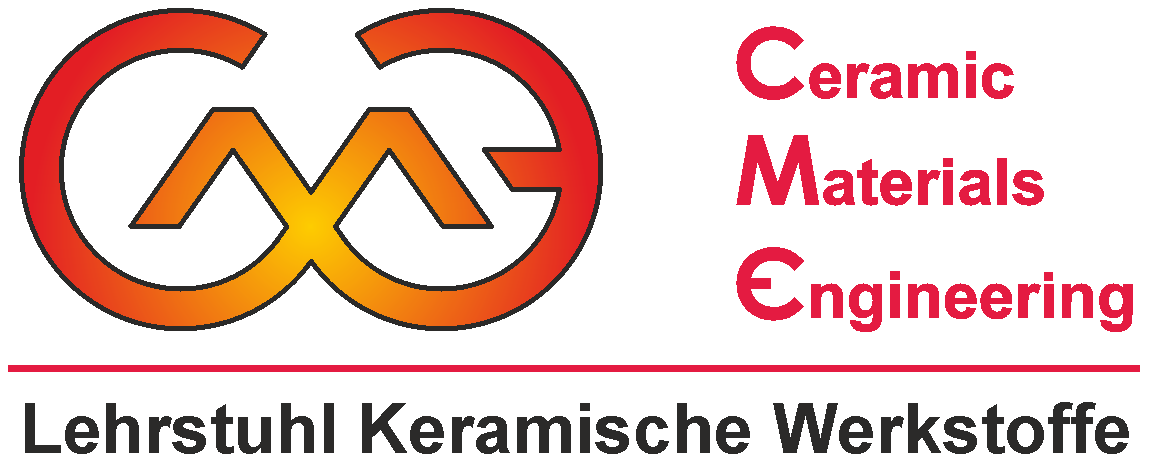Development and characterization of additively manufactured thermoplastic-based short- and continuous-fiber reinforced C/C-SiC composite ceramics
Fiber-reinforced composite ceramics are becoming increasingly important due to their excellent thermomechanical properties. In the LSI process, as the most important manufacturing process, a C-fiber reinforced plastic laminate (CFRP or green body) is converted into a C-fiber reinforced SiC ceramic (C/C-SiC). The plastic matrix must consist of a C precursor, at least 50% by weight of which is converted into amorphous carbon during pyrolysis and finally reacts with molten silicon (> 1420 °C) to form SiC.
The thermophysical properties of C/C-SiC materials depend significantly on fiber orientation, fiber-matrix bonding, fiber volume content, and fiber length. Currently, these variables can only be varied to a very limited extent for composite ceramics (CMC, Ceramic Matrix Composites). This leads to the fact that there is no possibility to design CMC exactly to thermophysical loads and to design the microstructure accordingly. It is possible to work with short fibers (> 6 mm) close to the final contour, but one obtains isotropic fiber orientations, only moderate strengths, and low fiber volumes. High strengths, fiber volumes but no near-net-shape can be realized with C-fabrics.
A combination of these advantages requires an additive, automated, load-oriented deposition of C-fibers in CFRP manufacturing. This is the aim of this project to increase the application potential of composite ceramics. To be able to manufacture additively with short and continuous fiber reinforcement, C-fiber reinforced PEEK is used in the FDM/AFP process. PEEK leaves more than 50 wt% residual carbon after pyrolysis, but melts at > 340 °C, which can deform, delaminate and inflate green bodies.
A process is therefore being developed to at least partially crosslink or render infusible PEEK, thermally, oxidatively. This is being attempted on PEEK without fibers, with < 0.5 mm long individual fibers as well as fiber bundles > 25 mm and has already been successful in some preliminary work at the applicant. If this is successful, 3D bodies can be fabricated without shape-stabilizing tools or axial weights, in contrast to the state of the art, and the microstructure can also be designed in such a way that the pyrolysis gases can easily escape through additively generated degassing channels. Bloating or delamination is thus prevented. Analytically, the crosslinking process of PEEK is investigated by thermogravimetric, calorimetric, and rheological methods at temperatures up to 600 °C. This is done to understand the kinetics and separate parallel processes such as oxidation, degradation and melting from crosslinking, as well as to determine a process window for crosslinking. Additionally, the microstructure and strength as well as damage tolerance will be analyzed. Finally, various prototypes will be additively manufactured to demonstrate the potential of the new manufacturing method.
Duration: 06/2021 - 05/2024
Funding body: DFG
Contact: Dipl.-Ing. Wolfgang Freudenberg, Dr. rer. nat. Nico Langhof

